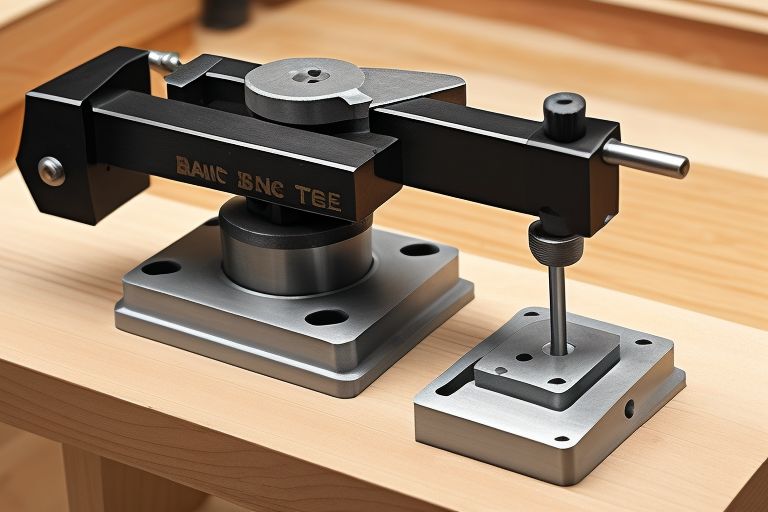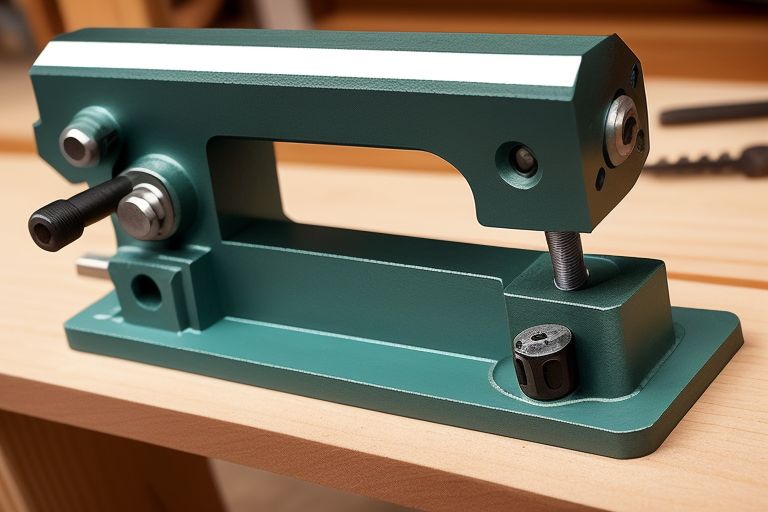A bench vise is one of the most important tools for any DIYer, woodworker, or metalworker. Whether you are cutting, drilling, sanding, or shaping, a bench vise helps you hold your workpiece steady so you can work with precision and safety.
In this blog, we will explore everything about bench vises – from different types to how to choose the right one, maintenance tips, and safety guidelines. If you’re setting up a workshop or just want to upgrade your tools, this guide will help you make the best decision.
Table of Contents
What is a Bench Vise and Why is it Important?
A bench vise is a clamping tool attached to a workbench. It holds objects in place while you work on them. This makes it easier to handle tasks like filing, cutting, and drilling. Without a vise, keeping the material steady can be challenging.
This tool is important because it allows for precision. When the material doesn’t move, you can work on it with more accuracy. It also keeps your hands free, which is useful for using both power tools and hand tools safely.
Bench vises come in different sizes and materials. Some are small and light, while others are heavy and strong. Choosing the right one depends on your work type and how often you need it.
Whether for woodworking, metalworking, or general DIY projects, having a reliable vise is a game changer. It improves efficiency and ensures better results in all kinds of workshop tasks.

Types of Bench Vises: Which One Do You Need?
There are different types of bench vises for various tasks. Choosing the right one depends on what materials you work with most.
1. Woodworking Bench Vise
This type is designed for working with wood. It has wide jaws to hold wooden pieces without damaging them. Many woodworking vises also have a quick-release feature for easy adjustments.
2. Metalworking Bench Vise
A metalworking vise has strong, hardened steel jaws. It can handle high pressure and hold metal pieces securely. This vise is ideal for cutting, filing, and shaping metal objects.
3. Pipe Vise
A pipe vise is used for holding round pipes or tubes. It has curved jaws that grip pipes tightly. Plumbers and metalworkers commonly use this type of vise.
4. Multi-Purpose Bench Vise
If you need a vise for different materials, a multi-purpose vise is a good option. It can hold wood, metal, and plastic securely. Some have rotating jaws that adjust to different shapes.
Choosing the right vise ensures better efficiency and safety. Think about your tasks and pick a vise that matches your needs.
How to Choose the Best Bench Vise for Your Workshop?
Selecting the right vise is important for getting the best results. Here are some key factors to consider:
- Jaw Width & Opening Capacity: The size of the vise determines what it can hold. A larger jaw width is better for big projects.
- Base Type: Fixed base vises offer stability, while swivel base vises provide flexibility for different angles.
- Material: Forged steel vises are stronger and last longer than cast iron vises.
- Mounting Style: Some vises need to be bolted to a workbench, while others can be clamped on for easy removal.
- Extra Features: Look for features like quick-release mechanisms or replaceable jaws for added convenience.
Thinking about these factors will help you get the right tool for your needs. A well-chosen bench vise will improve your work quality and make tasks easier.
Top Uses of a Bench Vise in Woodworking and Metalworking
A bench vise is a versatile tool used in many industries. Here are some common ways it is used:
- Holding wood for cutting and shaping – Woodworkers use a vise to secure planks while working on them.
- Metalworking tasks like filing, grinding, and bending – Metalworkers need a strong vise to hold metal pieces steady.
- Drilling support – A vise ensures the workpiece stays in place while drilling.
- Assembly and disassembly tasks – Mechanics use vises to hold parts together while fixing or taking them apart.
- Bending and shaping materials – Some heavy-duty vises can help shape metal parts.
A bench vise makes these tasks safer and more efficient. It allows for better control and precision in every project.
Bench Vise Maintenance: Keep It Strong and Rust-Free
Taking care of your vise will make it last longer. Follow these simple maintenance tips:
- Clean regularly: Wipe away dust, debris, and metal shavings after each use.
- Lubricate moving parts: Apply oil to the screw mechanism and jaws to keep them moving smoothly.
- Check for loose parts: Tighten any bolts or screws that may have loosened over time.
- Prevent rust: Store the vise in a dry place and apply anti-rust spray if needed.
Regular maintenance ensures your vise stays in top condition. It also prevents damage and keeps it working efficiently.
Common Mistakes People Make When Using a Bench Vise
Even experienced users can make mistakes with a vise. Here are some things to avoid:
- Over-tightening: Too much pressure can damage both the vise and the material.
- Using the wrong vise type: A woodworking vise isn’t strong enough for metalwork.
- Incorrect mounting: A loose vise can slip and cause accidents.
- Ignoring maintenance: A rusty or stiff vise won’t work properly.
Being mindful of these mistakes will help you use a vise safely and effectively.
Bench Vise Safety Tips: How to Use It the Right Way
Using a vise safely is just as important as choosing the right one. Follow these safety tips:
- Secure it properly: Make sure the vise is firmly attached to a stable workbench.
- Position the workpiece correctly: Ensure it sits flat and level in the jaws.
- Use even pressure: Tighten the jaws gradually to avoid damage.
- Wear safety gear: Always use gloves and safety glasses to protect yourself.
- Don’t overload: A vise has a weight limit. Avoid placing too much pressure on it.
Following these guidelines will keep you safe and prevent accidents in your workshop.
How to Mount a Bench Vise Properly on Your Workbench?
Permanent Mounting:
- Choose a sturdy workbench.
- Mark the drill holes before attaching.
- Secure with heavy-duty bolts for stability.
Temporary Mounting:
- Use a clamp-on vise for flexibility.
- Place it on a smooth, flat surface.
- Ensure it is tightened properly before use.
Mounting your vise correctly ensures better performance and safety. Pick the right method based on your workspace needs.

Final Thoughts: Why Every DIYer and Professional Needs a Bench Vise
A bench vise is a must-have tool for woodworking, metalworking, and DIY projects. It helps hold materials in place, making work easier and safer.
Choosing the right type, maintaining it properly, and following safety guidelines will help you get the best results. Whether you are a beginner or a pro, a bench vise is a valuable addition to any workshop.
Now that you know everything about bench vises, it’s time to pick the best one for your needs. Invest in a good vise and enjoy working with greater precision and ease!
Conclusion
A bench vise is a super helpful tool that makes woodworking, metalworking, and DIY projects easier. It holds your workpiece tight so you can cut, drill, or shape it safely. Picking the right vise, taking care of it, and using it the right way will help you work better and keep your hands safe.
No matter if you are a beginner or a pro, a bench vise is a great tool for any workshop. It helps you do your tasks with more control and accuracy. With the right vise, you can enjoy your work and get better results in every project!
FAQs
Q: What is a bench vise used for?
A: A bench vise is used to hold materials like wood and metal firmly in place while you cut, drill, file, or shape them.
Q: How do I choose the right bench vise?
A: Choose a vise based on the material you work with, the jaw size, and whether you need a fixed or swivel base. A strong metal vise is best for tough jobs.
Q: How can I keep my bench vise from rusting?
A: Keep it dry, clean it after use, and apply a little oil on moving parts to prevent rust. Storing it in a dry place helps, too.
Q: Can I use a woodworking vise for metalworking?
A: No, woodworking vises are not strong enough for metal. Use a metalworking vise, which has hardened steel jaws for extra grip.

